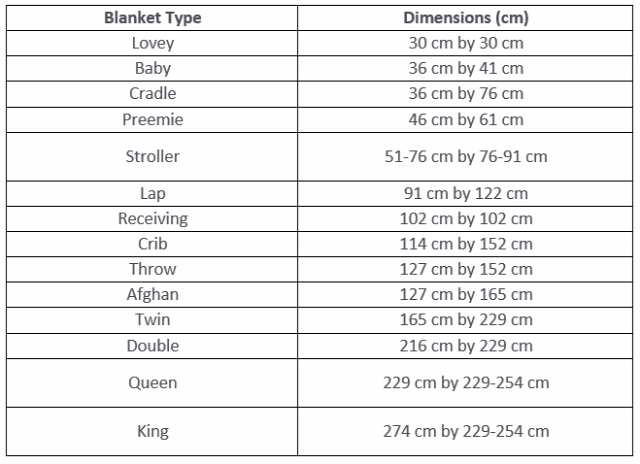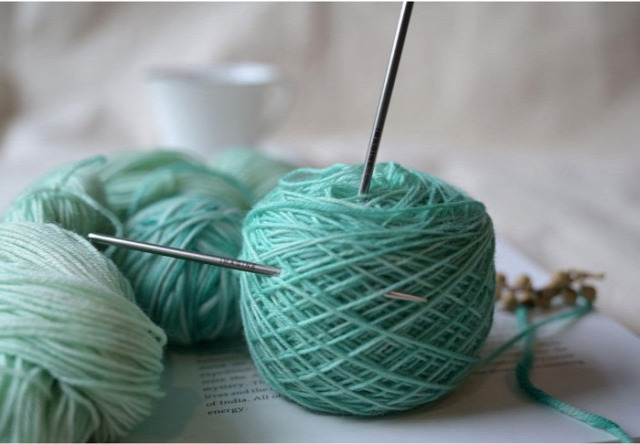Want to make a blanket for yourself or a loved one? Knitting a blanket may seem like a big undertaking but it is one of the simplest projects. You do not even require a pattern as you can plan your own design. All you need is yarn (a few skeins or even leftovers from your stash will do), your knitting needles (straight needles for back and forth knitting) and some accessories.
Let’s walk you through knitting a blanket on circular needles. This guide shall help a beginner with the blanket project as well as advanced makers to make one without a pattern. So let’s get started.
We’ll start with a quick glance at the size of the blankets. Deciding upon the project dimensions will assist with making decisions about knitting needles, yarn and the construction part of the project. Baby blankets are fun to make as well as quick projects, adult-sizes do take time and effort but it is a worthwhile gift as well as a beautiful way to decorate your home.

Knitting Needles — We have chosen a pair of circular knitting needles, preferably with cables 100 to 150 cm. Single-pointed knitting needles work too, but they won’t be able to accommodate all the stitches and the project will become very heavy and tedious. The needle size depends on the yarn weight and the look of the fabric you want to make. Smaller needle sizes work with lightweight yarns and bigger needles work with chunky-weight yarns. Given the multiple benefits of knitting with circular needles, it is the best choice for a blanket. The cables of the needle carry the weight of the project keeping your hands & wrists free from fatigue. Also, the needle length accommodates stitches of the entire length or breadth of the blanket. In fact, working on circulars has the benefit of carrying the project on the go but make sure to have a tote bag for easy storage and organization.

Yarn Weight & Material — The yarn choice depends upon the blanket’s recipient. A baby blanket needs to be soft, warm and not fuzzy. While adult ones can be experimented with. Wool is warm and durable, wool blends are a good choice while the cotton yarn is also a good option. If you have leftovers from your stash you can include them too. Make sure the yarn weight matches. If they are different weights make small squares or patches and then join them together.

A knitting needle set works for blanket knitting as well as other projects. Make sure to have a handy darning needle, sharp scissors and blocking tools.
Blanket Knitting
Knitting a blanket is similar to a bigger version of knitting a gauge swatch. You simply knit row by row back and forth. Both the right side and the wrong side are visible. Blankets can be knit as one piece or can many squares can be seamed together to make a rectangle or square fabric.
In knitting, all stitches are based on the knit and purl stitches. The most common stitch patterns are garter (pattern of all knit stitches on all rows) and stocking stitch (pattern of alternating rows of knit and purl stitches). There is no harm in going ahead with the common stitches but you can also try textured patterns such as seed stitch, moss stitch, cables and more. For your blanket just make sure to have a uniform edge around all sides. You can ensure neat edges by adding a border of garter stitches or an I-cord.
While a blanket is forgiving in regards to a gauge, it is always recommended to make one. With the knitting needles and the yarn, you’ll be using for the blanket make a small square of 10X10 cm. Wash and block the tension square and then calculate the row and stitch gauge. With the gauge, calculate the yarn needed for the project and get a glimpse of how the pattern will turn out to be. With this, get ready to cast on your blanket.
Knitting a blanket or any other project, make sure to always have the right tools. The Mindful Collection has a range of smooth stainless steel knitting needles and accessories. A choice of needle sizes and a variety of cable lengths and an inspirational word imprinted on the needle helps to reap the meditative benefits that come with knitting.
Source: https://medium.com/@mindfulknitpro/knitting-a-blanket-with-circular-needles-ac144ee5673f


